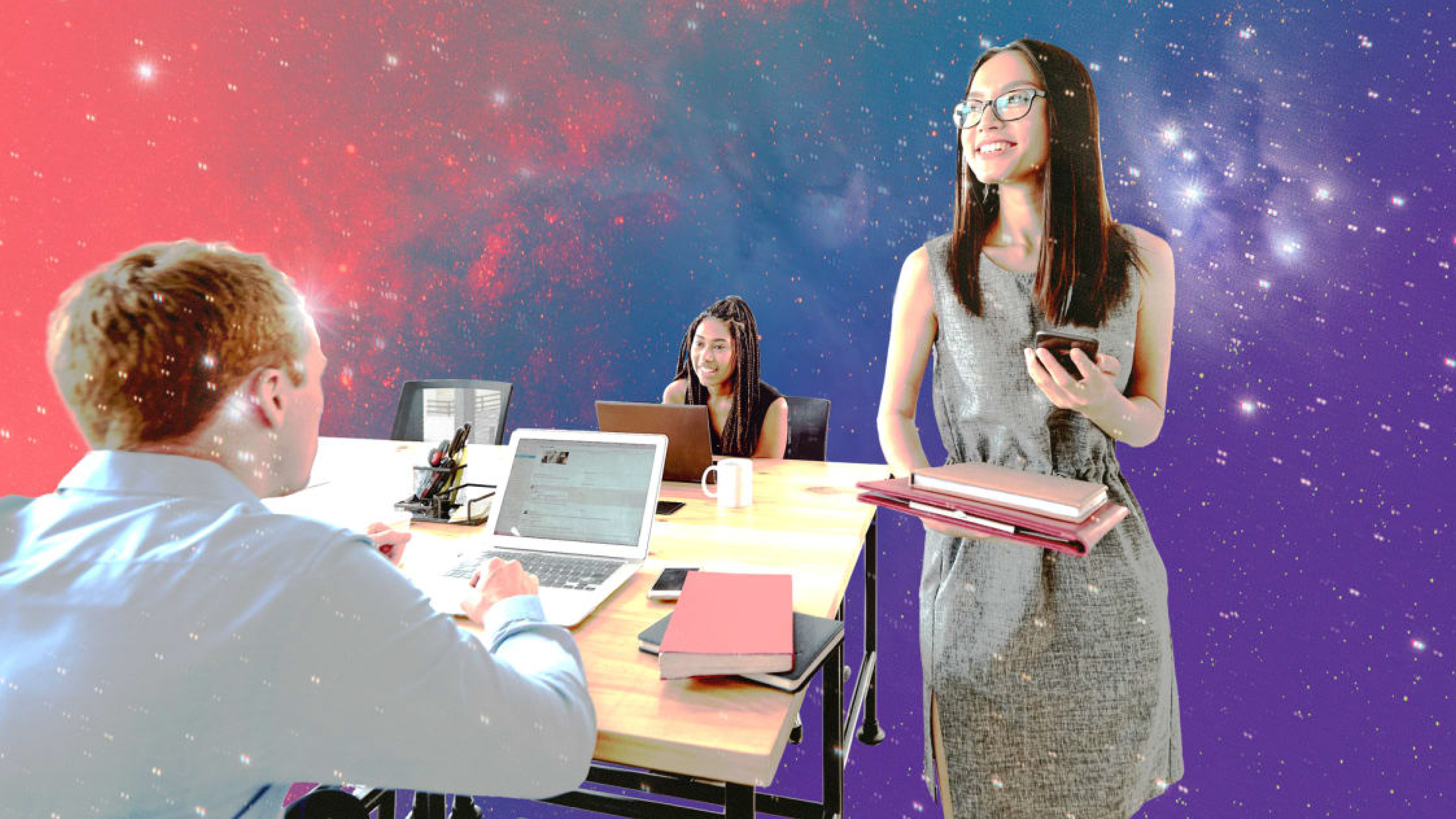
By Diana Shi
Photo Credit: iStock, Pexels, Unsplash
For many of us, the experience of walking down the hallway and running into a colleague is a distant memory—something we did in the Before Times.
Serendipitous moments like these were not the product of weeks-long planning or email reminders. Instead, catching a coworker in the kitchen or copy room for an exchange of ideas just happened. And the inspiration and boost to productivity which sprung from there were equally unscheduled.
Even those of us who considered hallway run-ins a distraction are feeling the hole they left behind. This can especially stark when compared to our present remote reality where many of us only have faceless Slack conversations.
As we adjust to a prolonged period remote work, prioritizing casual chats and embracing random encounters can lead us to inspiration and encourage us to check more off our to-do lists.
This isn’t just a hypothetical idea. Anita Williams Woolley, an associate professor of organizational behavior and theory at Carnegie Mellon’s Tepper School of Business, says these unplanned moments can lead to improved problem-solving, productivity, and creativity.
“These conversations happen naturally in the office, and it doesn’t feel like you’re slacking off, because you’re not,” she says. “They ultimately feed into the quality of what you ultimately produce.”
THE RELATION TO PRODUCTIVITY AND CREATIVITY
Before we all began working from home, random chats and office run-ins provided us with a much-needed workday break. “We know, from the psychology of productivity and problem-solving, that periodic breaks are really beneficial,” says Woolley. The spontaneous run-in helped dictate “the cadence at which you take breaks, so if you’re working in an office environment, you need to get up and walk around to do things more than when you’re at home.”
Moreover, breaks give you creative space to pause, reanalyze, and take the best approach moving forward. “There is a phenomenon in psychology, around creativity and problem-solving . . . where when you stop working on a problem, you continue to ruminate on it, and when you return to it, new things occur to you that otherwise would not have.”
For example, at home you may reach across your kitchen counter and pour yourself a cup of tea. In the office setting, you’re forced to get up from your desk, walk to the kitchenette, select a mug and variation of tea, and spend some time making your drink, all away from your desk. Together, these little moments amount to a mini recharge.
Serendipitous interactions can provide the “happy coincidence” benefits of healthy teamwork and collaboration. “In the process of moving around the office, you run into people. These are people who know something about your domain [of work], but maybe aren’t working on the exact same thing as you. And these conversations are likely to bring up links to things tangentially related to your work, and suggest a new association and bring about creative insight.”
However, mixing across different specialties or departments can have a unique benefit. One example, says Woolley, is prior to the coronavirus pandemic, her university colleagues frequently interfaced with different department staff in meetings—a process which led to novel collaboration opportunities and light-bulb moments. In a remote work environment, this sort of creatively charged moment is less likely to happen.
OTHER EFFECTS OF SPONTANEITY
Spontaneous run-ins can help ensure a stronger network of emotional support for workers, too. You can think of unplanned interactions as a means of keeping tabs on your colleagues’ well-being and states of mind. For instance, if your deskmate has been calling off work for the last week, this may raise a red flag to you and their manager.
“For organizations, there is a tremendous amount of information leaders and coworkers have about each other in the traditional environment,” says Woolley. “The big challenge in a remote environment is silence.” And if you’re looking to move to a new dentist office or need recommendations for childcare providers, your casual conversations with coworkers can help bolster the quality of your personal life as well.
PLAN FOR CASUAL CONVERSATION
It’s no surprise unplanned moments bond us. They stimulate us creatively, through new insights, connect us with different people from our organization, and humanize work. But we can re-create these moments in a remote setting. It just requires being more intentional and understanding the importance of these interactions.
Woolley stresses that managers can encourage people to reach out to one another and create time to chat—even if it’s not explicitly work-related. “Actively nudge people to find ways to do it. And send the message that [this type of] social interaction is just as important as the time you’re spending on your individual work.”
For instance, Woolley says she’s heard of employees planning virtual meet-ups based on what floor they used to sit on in their offices, or organizing Zoom chats based on “those people you might run into in the office.”
Another technique is to create an always-accessible interaction hub—such as a constantly accessible breakout room where people can enter and leave as they please. Says Woolley, “Some [workplaces] have experimented with ‘virtual watercolors.’ So, if I’m going to take a break and have a cup of coffee, I’ll flip that, see who’s in there, and talk to [those] people.”
For the original article, visit Fast Company.


.png?width=861&upsize=true&name=Blog-01%20(1).png)
